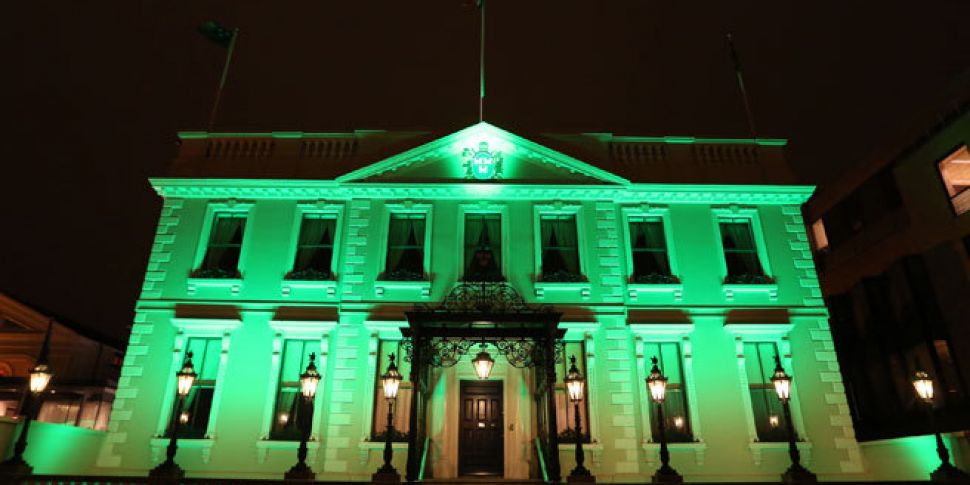On Wednesday, the Dáil will debate a Green Party bill calling for a directly elected mayor for Dublin.
The Local Government (Mayor and Regional Authority of Dublin) Bill 2016 mirrors a 2010 bill introduced by the Green Party and Fianna Fáil, would create an office with powers to set housing and transport strategies for the city.
Green Party leader Eamon Ryan says: "This bill provides a real chance of making a directly-elected Mayor of Dublin a reality in time for the 2019 election cycle.
"Now, more than ever, we need strong leadership to tackle the housing and transport crises facing our city.
"At present, we have four local authorities, four chief executives, four mayors, 183 councillors, and countless State agencies in Dublin, often competing against each other.
"It is time we got the development of urban Ireland right and directly elect a mayor with a vision to take on that task."
The bill establishes an a administrative relationship between the new mayor and authority so the new offices work through, and with, existing local government structures.
Meanwhile, Fianna Fáil is calling for a consultation process, a plebiscite in 2018 - and if passed, a mayor would be directly elected in 2019.
So what exactly does it all mean? We've broken it down:
The Bill
The bill would give powers similar to those of the London Mayor.
A directly-elected mayor would head a new regional authority for the city, and would have a vital role in planning and managing how the city is going to work and grow.
Information on the Local Government (Mayor and Regional Authority of Dublin) Bill 2016:
The bill is a revised and updated version of one that had completed committee stage in December 2010.
It proposed to establish a new Regional Authority of Dublin and a directly elected office of Mayor of Dublin to sit above the existing four Dublin Local Authorities in a coordinating and leadership role.
It also has defined strategic policy areas:
- Land-use planning
- Housing
- Transport
- Waste management
The cost?
The exact particulars of a mayoral election have yet to be established, as it is a new kind of election.
However a directly elected mayor could see an election campaign with posters, pitches and leaflets to the public.
While candidates - especially those who are not members of a political group or party - may have to put up their own funding for a campaign, they are entitled to claim this back.
Parties and candidates must account for all that they spend on an election, and are only allowed to spend a certain amount on elections.
Under the current Electoral Act of 1997, if a candidate receives at least one-quarter of the quota of votes they can apply for a reimbursement of up to €8,700 of their election expenses.
Poster rules also apply, which say a party/candidate must remove posters within seven days after an election.
After that date, an on-the-spot fine of €150 is issued by a local authority for each offence.
And a campaign could even see adverts like this one from current London Mayor Sadiq Khan:
The examples
Dublin would of course not be the first city to have a directly elected mayor.
There are 13 directly-elected mayors in England, plus the Mayor of London.
The London system was created in 2000, following the abolition of the Greater London Council by Margaret Thatcher in 1986.
London's Mayor has a four-year term with no term limits. They also have powers over transport, planning, economic development, fire and emergencies, and the police.
The Mayor of London is also widely seen as giving London a greater international profile, according to Tony Travers from the London School of Economics.
The United States is well-known for its system of elections for individuals at the Federal, State and city level.
New York is just one example where the mayor is directly elected.
For or Against
The US-based Municipal Research and Services Center (MRSC) has looked at the pros and cons of having a directly elected mayor, based on their model.
For:
- There is a separation of powers between the executive and legislative branches
- There are checks and balances
- The council can refuse to confirm the mayor's appointments and the mayor can veto the council's legislation
Against:
- The office of the mayor gives too much power and authority to one person
- Qualities needed to win an election are not the same qualities needed to manage a city
- A separately elected mayor may resist requests from the council
When?
If the bill passes, the first chance people would get to vote is alongside the local elections in 2019.









